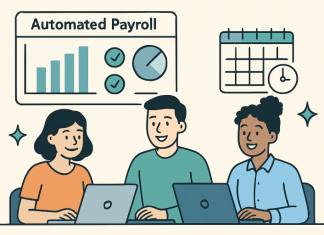
You may or may not have realized this, but software and the influence of software take up a majority of our lives. At this point in time, we have successfully moved and evolved into a digitally embedded society, and software and technology contribute so much to increase our standard of living. For instance, the possibility of living in an evolved and smart world is now quite possible. Not only that, but all of our business prospects have also increased dramatically because of various software available.
That being said, the software can only be useful if they function properly, and it can have disastrous effects on one’s business. That’s why it’s fundamental that all of us is aware of the importance of software testing and quality assurance, no matter what your business may be. For more information on software testing, you can also check the TestFort blog.
What Is Software Testing?
Otherwise known as quality assurance or QA, software testing deals with more than just finding big and small bugs. It’s a vital process that checks and ensures that particular software is able to meet all the requirements of the project. Not only that, but it also checks whether the software is durable, usable, reliable, works smoothly, and is ready to be used.
There are four different kinds of software testing, and these are all essential to ensure that the software is impeccable before sending off to production. These software testing types include usability testing, performance testing, security testing, functional testing, and a lot more. There’s also automation testing and manual testing.
What Your Business Can Gain From Software Testing
Now that you understand what software testing is all about, you’re probably wondering whether this kind of extra expense for your business will only waste your money in the long run. Is software testing really worth it? In this section, we’ll list down some of the major pros of software testing so you can make an informed decision.
Reduce Money Losses Due to Bugs
Discovering and fixing bugs much later during the development process can be a real hassle, but do you what’s even more frustrating and expensive than that? Having to fix bugs in the middle of production. Most often than not, customers or clients are the ones who discover these bugs, which can greatly affect their overall customer experience.
Plus, having bugs in your software only gives hackers and competitors a chance to peek into what your business is up to, and you don’t want that. If you don’t believe that it’s that serious, an analysis by Tricentis via Software Fail Watch shows that businesses lost $1.7 trillion in assets in 2017 just because of software failures alone.
If your software also fails in terms of performance, functionality, or usability, you could end up losing valuable and potential clients. After all, they would be wary of what you have to offer because no one wants to use software that doesn’t work as intended. In other words, you and your business end up losing tons of money from a mistake that could have been avoided through testing.
Maintain the Reputation of Your Business
Naturally, the more you lose clients because of faulty software, the more your business reputation will take a hit. Reputation, as we all know, is very easy to lose but is difficult to build and maintain. Most of the time, unhappy customers will post their dissatisfaction on the internet or leave your business low ratings, which will eventually reach other people and potential customers.
Not only that, but any news about a company’s software failures can also cause its shareholder value to decrease significantly.
Save More by Fixing Bugs Early On
When you’re in the web design industry, there’s one thing that can be considered as a universal truth, and it’s that small, minor bugs are easy and cheap to fix. As such, it’s always better to discover and get rid of them early on during the development phase because when they grow over time from feeding off your software, the costs of fixing them increase significantly.
Not only that, getting rid of these major bugs is a tedious process that takes a lot of time and effort. If you don’t discover a bug right away, this typically results in glitchy functionality. There’s also a chance that the existing bugs will hide other bugs, so you don’t notice them right away—until it’s too late.
When this happens, developers have to do more work and spend more time trying to find the root cause for the bug, fix the codebase, as well as track which parts were affected by the bug. The more time you spend in web development, the more money you’re also chewing up.
Spend Less Time on Unnecessary Tests
There are times when teams spend countless hours debugging and finetuning the software, but they never really find anything wrong with it. If this is the case for you and your team, you can speed up the testing process significantly by putting up the right kind of production monitoring. This way, you’ll know right away when something is slow, broken, or goes wrong.
In the long run, this approach ensures that you won’t spend so much precious time doing worthless tests when you could have been doing something more important.
Manual vs. Automated Testing
When you speak of software testing, it’s typically separated into two different categories: namely, manual testing and automated testing. One type of testing isn’t better than the other, but when you use them depends on different factors. These factors include expertise, budget, suitability, project requirements, timeline, and more.
If you’re working on a smaller project, then manual testing can be a sufficient process for you, especially if you don’t really have the financial resources to splurge. Automated testing, on the other hand, is more suitable if you’re dealing with regression testing because of the constantly changing codes.
Conclusion
While it can’t be denied that software testing can be more expensive at first, but given how much testing needs to be done, it’s safe to say that you end up saving more in the long run. Think about it: how much do you end up paying when don’t properly test your software versus paying a major amount at the beginning only?
Having reliable software means that clients are satisfied, which leads to more potential customers flocking to your product. At the end of the day, having an unreliable product from the get-go requires you to give up even more money just to fix the problem. Nip the issue in the bud as soon as you discover it, and that’s where software testing joins the picture.










